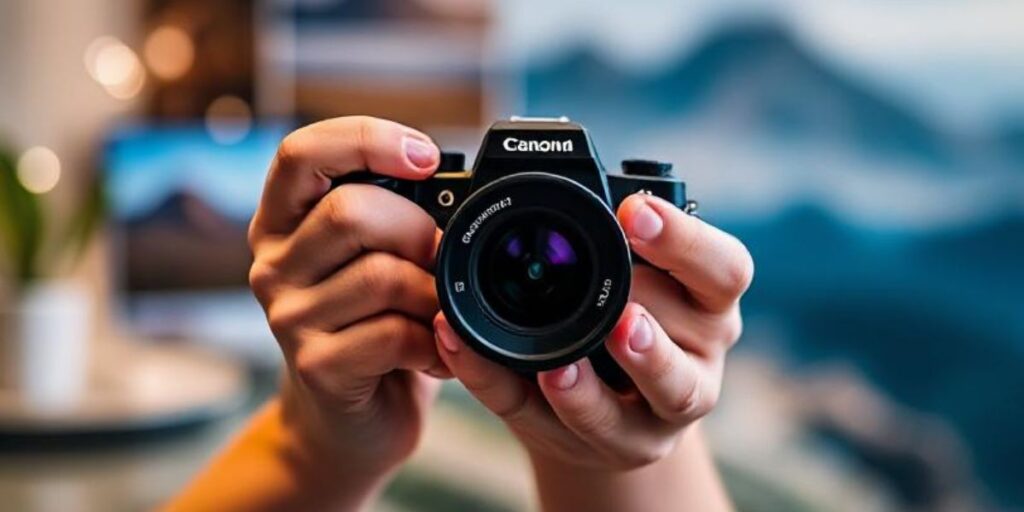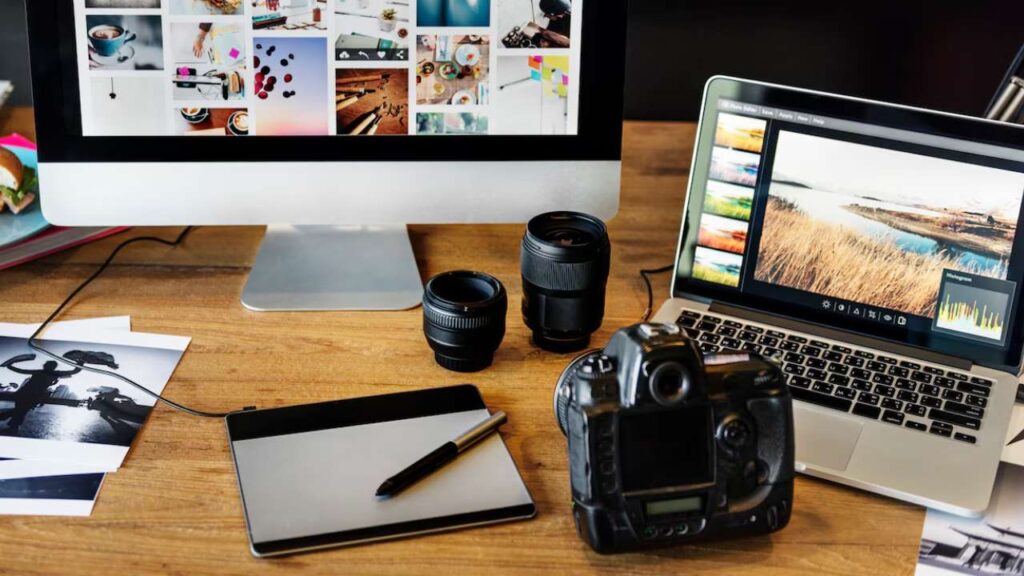Are you someone who is wondering how to market a photography business? As you may know that over the years, photography transformed from a recreational pursuit into a profitable enterprise because companies and social media platforms now need visual content at increased levels. The photography industry enables photographers to express their creativity while providing great opportunities to boost their earnings by delivering high-quality visual content to weddings and brands. The modern photographer combines three vital roles into one profession since they create content while telling stories and building their own business ventures. With its expanding demand and flexibility, photography continues to be seen by many as one of the world best business opportunity to invest in today.
Launching a photography business demands more than owning professional equipment because it requires developing a brand identity alongside market research alongside delivering distinctive value propositions to customers. The photography field has multiple profitable divisions that range from wedding images through portraits and real estate and finally extends to product pictures. People who notice details well while sharing visual narratives through their dedication to starting an enterprise from the ground up should consider pursuing photography as their business adventure.
The Appeal and Potential of a Photography Business

Starting and growing a photography business enables the chances for successful photographers because of its adaptable working conditions. You can start part-time work while maintaining your current job until your portfolio and customer network expands enough for full-time operation. The start-up requirements to launch a photography business include equipment purchases and marketing expenses, but they remain easy to manage despite needing relatively low capital. If you’re wondering how to start a photography business, understanding the industry’s growth potential is essential.
The photography industry has strong growth potential within its business landscape. In fact, the photography services market size is forecast to increase by USD 11.57 billion at a CAGR of 4.8% between 2024 and 2029, highlighting the rising demand for visual content across sectors. Online branding and marketing initiatives now depend strongly on business utilization of visual content. Businesses actively seek professional photographers to document their industry needs, alongside individuals who hire photographers for their personal life commemorations. The combination of excellent service with reliable quality work allows photographers to earn higher fees from clients who become repeat customers while opening possibilities to develop online programs and picture sales ventures.
Step-by-Step Guide to Starting a Photography Business
Gearing up a photography business requires both creative dedication and business determination. Each business move matters because photographers need to master not only the art of moment documenting but also the intricacies of client and financial management. If you’re wondering how to start a photography business, it’s important to take a structured approach that balances both creativity and operational efficiency. This outline provides comprehensive steps to help establish a sustainable photography brand, guiding you through the construction process to set the foundation for long-term success.
1. Market Research and Niche Selection

Business owners should conduct thorough market research before dedicating time and resources to find their most profitable market sector. Your market research confirms that your business fulfills real market requirements beyond general business presence. A photography business plan requires thorough market research alongside selection of the appropriate niche to establish successful operations. You can understand the market position of your competitors and service gaps alongside customer demand by implementing survey records and Google Trends analysis.
Your understanding of your target audience improves once you explore wedding photography with portraits and real estate along with product picture-taking niche segments. Your business credibility combined with authority in a particular sector emerges directly from selecting a distinct niche which allows you to develop focused branding and marketing plans. The decision to specialize lets you create distinct value as an expert who delivers specialized knowledge to serve well-defined audiences for clients who need targeted expertise.
Key Actions:
How to Start a Photography Business begins with determining existing local photographers and online photographers who operate in your sector. Research the prices they use as well as the ways they photograph things and read client opinions and observe social media presence and examine the available packages for services. Analysis tools generate data on market trends together with customer choices and business advantages that exist in the market.
Scan the market for customer segments that receive limited service. In a market heavily populated by wedding photographers a rising demand for product or brand photographers becomes apparent because e-commerce continues to grow.
The demand assessment process includes accessing Google Trends data and Instagram hashtag statistics as well as local Facebook group interest in various photography service types. Other methods for obtaining qualitative information include conducting surveys along with informal interviews and participating in community events.
Popular Photography Niches:
- Wedding & Event Photography
- Portrait Photography (family, graduation, maternity)
- Newborn & Pet Photography
- Product & Commercial Photography
- Real Estate Photography
- Fashion & Editorial Photography
- Travel & Landscape Photography
- Sports & Action Photography
Defining your niche enables specific marketing approaches that enable better service development to establish yourself as a unique brand.
2. Business Planning and Legal Setup

Business owners should conduct thorough market research before dedicating time and resources to find their most profitable market sector. Your market research for a best camera for photography business confirms that it fulfills real market requirements beyond general business presence. A photography business requires thorough market research alongside selection of the appropriate niche to establish successful operations. You can understand the market position of your competitors and service gaps alongside customer demand by implementing survey records and Google Trends analysis.
Your understanding of your target audience improves once you explore wedding photography with portraits and real estate along with product picture-taking niche segments. Your business credibility combined with authority in a particular sector emerges directly from selecting a distinct niche which allows you to develop focused branding and marketing plans. The decision to specialize lets you create distinct value as an expert who delivers specialized knowledge to serve well-defined audiences for clients who need targeted expertise.
Key Actions:
Determine existing local photographers and online photographers who operate in your sector. Research the prices they use as well as the ways they photograph things and read client opinions and observe social media presence and examine the available packages for services. Analysis tools generate data on market trends together with customer choices and business advantages that exist in the market.
Scan the market for customer segments that receive limited service. In a market heavily populated by wedding photographers a rising demand for product or brand photographers becomes apparent because e-commerce continues to grow.
The demand assessment process includes accessing Google Trends data and Instagram hashtag statistics as well as local Facebook group interest in various photography service types. Other methods for obtaining qualitative information include conducting surveys along with informal interviews and participating in community events.
Popular Photography Niches:
- Wedding & Event Photography
- Portrait Photography (family, graduation, maternity)
- Newborn & Pet Photography
- Product & Commercial Photography
- Real Estate Photography
- Fashion & Editorial Photography
- Travel & Landscape Photography
- Sports & Action Photography
Defining your niche enables specific marketing approaches that enable better service development to establish yourself as a unique brand.
3. Building Your Portfolio and Brand

The primary concern of clients is to acquire unique brands and portfolios for starting and growing a photography business that serve as essential instruments to attract new customers. Begin your service delivery through discounted rate packages or no-cost options which help you build targeted work samples. Showcase your best work on a clean, professional website with high-resolution images and contact options. During brand development you must create a logo alongside choosing distinctive colors and typography elements then you must define a brand voice which expresses your personal style.
All promotional materials your company produces for business cards and social media badges need to display identical visual components alongside consistent presentation elements. Your professional portfolio serves as the foundation to create trust perceptions while making you stand out among photographers who operate in the same market. Whenever customers show enthusiasm about photography they will first encounter your portfolio before moving on to the evaluation of your professional services. The portfolio requires you to display your skills and maintain regularity and innovation within your photography domain.
Portfolio Development:
Start by offering both discounts and free services to friends and local influencers who will later publish their experiences in promotional format.
Show your versatility by adding diverse modeling poses together with multiple lighting arrangements as you work with different subjects in every segment of your target specialty.
Your Online Portfolio should have an expert-made website platform. The website must contain three main areas supported by image galleries alongside service explanations and client contact opportunities and a description of professional services.
Brand Building:
- The foundation of your brand requires a uniform design system using specifically selected fonts alongside colors as well as an exclusive logo.
- Offline branding requires you to create multiple marketing materials including flyers and brochures together with business cards known as thank-you cards.
- The language of your brand should adapt to the audience through creative informal words or formal sophisticated words in all communications.
- Personal attributes together with distinctive preferences trigger people to develop connections with you. A professional management approach to portfolio presentation combined with brand management produces increased service appeal.
4. Equipment, Software, and Resources

The foundation of producing quality work in building the Potential Photography business stands on acquiring suitable equipment and tools. Your photography business requires a dependable DSLR or mirrorless camera together with important lenses (such as a 50mm prime or zoom) and necessary tools including tripods, reflectors and lighting equipment tailored for your photographic specialization. Customers will experience no interruptions when you maintain additional batteries and memory cards with backup storage systems. The editing industry uses Post-processing tools Lightroom and Photoshop as its main standards. Include additional equipment items like drones or backdrops when they support client business requirements.
Enhance your photography skills through membership in online courses along with photography forums. The choice of strategic equipment investments leads to steady work completion and it generates professional-standard client-oriented results. Professional tools enable both better work results and faster production speed. Initiate with essential equipment before broadening your inventory during business expansion.
Essential Equipment:
- Camera Body: A reliable mid-range DSLR or mirrorless camera like Canon EOS R or Nikon Z5.
- Lenses: A prime lens (e.g., 50mm f/1.8) for portraits and a versatile zoom lens (e.g., 24-70mm).
- Tripod: For stable, sharp images in low light or studio settings.
- You need softboxes together with reflectors and external flashes as your lighting equipment.
- Additional camera-related items consist of batteries, memory cards as well as cleaning kits along with camera carrying bags.
- Storage: External hard drives or cloud storage solutions like Dropbox or Google Drive.
Software:
- The editing softwareAdobe Lightroom together with Photoshop serve as standard tools in the industry.
- HoneyBook together with Studio Ninja integrate as CRM tools to provide invoicing abilities and booking management as well as follow-up systems for clients.
Learning Resources:
- Online platforms like Udemy, Skillshare, or Coursera.
- You can find YouTube tutorials which review equipment and demonstrate editing skills.
- Photography communities on Reddit, Flickr, or Facebook.
- Don’t overspend initially. The purchase and rental of camera gear should occur only after calculating its return on investment yields positive results.
5. Pricing and Financial Planning

This is the one stop way for the question of how to start a photography business legally. The foundation of producing quality work stands on acquiring suitable equipment and tools. Bring home a DSLR or mirrorless camera system together with essential lenses such as a 50mm prime lens or zoom lens as well as a tripod and reflectors and lighting equipment chosen for your target market. Customers will experience no interruptions when you maintain additional batteries and memory cards with backup storage systems.
The editing industry uses Post-processing tools Lightroom and Photoshop as its main standards. Include additional equipment items like drones or backdrops when they support client business requirements. Online courses together with photography forums serve as valuable sources to sharpen your skills. The choice of strategic equipment investments leads to steady work completion and it generates professional-standard client-oriented results. Professional tools enable both better work results and faster production speed. Initiate with essential equipment before broadening your inventory during business expansion.
Essential Equipment:
- Camera Body: A reliable mid-range DSLR or mirrorless camera like Canon EOS R or Nikon Z5.
- Lenses: A prime lens (e.g., 50mm f/1.8) for portraits and a versatile zoom lens (e.g., 24-70mm).
- Tripod: For stable, sharp images in low light or studio settings.
- You need softboxes together with reflectors and external flashes as your lighting equipment.
- Additional camera-related items consist of batteries, memory cards as well as cleaning kits along with camera carrying bags.
- Storage: External hard drives or cloud storage solutions like Dropbox or Google Drive.
Software:
- The editing softwareAdobe Lightroom together with Photoshop serve as standard tools in the industry.
- HoneyBook together with Studio Ninja integrate as CRM tools to provide invoicing abilities and booking management as well as follow-up systems for clients.
Learning Resources:
- Online platforms like Udemy, Skillshare, or Coursera.
- You can find YouTube tutorials which review equipment and demonstrate editing skills.
- Photography communities on Reddit, Flickr, or Facebook.
- Don’t overspend initially. The purchase and rental of camera gear should occur only after calculating its return on investment yields positive results.
6. Marketing and Client Acquisition

The foundation of producing quality work in photography business plan stands on acquiring suitable equipment and tools. Bring home a DSLR or mirrorless camera system together with essential lenses such as a 50mm prime lens or zoom lens as well as a tripod and reflectors and lighting equipment chosen for your target market. Customers will experience no interruptions when you maintain additional batteries and memory cards with backup storage systems. The editing industry uses Post-processing tools Lightroom and Photoshop as its main standards. Include additional equipment items like drones or backdrops when they support client business requirements.
Online courses together with photography forums serve as valuable sources to sharpen your skills. The choice of strategic equipment investments leads to steady work completion and it generates professional-standard client-oriented results. Professional tools enable both better work results and faster production speed. Initiate with essential equipment before broadening your inventory during business expansion.
Essential Equipment:
- Camera Body: A reliable mid-range DSLR or mirrorless camera like Canon EOS R or Nikon Z5.
- Lenses: A prime lens (e.g., 50mm f/1.8) for portraits and a versatile zoom lens (e.g., 24-70mm).
- Tripod: For stable, sharp images in low light or studio settings.
- You need softboxes together with reflectors and external flashes as your lighting equipment.
- Additional camera-related items consist of batteries, memory cards as well as cleaning kits along with camera carrying bags.
- Storage: External hard drives or cloud storage solutions like Dropbox or Google Drive.
Software:
- The editing softwareAdobe Lightroom together with Photoshop serve as standard tools in the industry.
- HoneyBook together with Studio Ninja integrate as CRM tools to provide invoicing abilities and booking management as well as follow-up systems for clients.
Learning Resources:
- Online platforms like Udemy, Skillshare, or Coursera.
- You can find YouTube tutorials which review equipment and demonstrate editing skills.
- Photography communities on Reddit, Flickr, or Facebook.
- Don’t overspend initially. The purchase and rental of camera gear should occur only after calculating its return on investment yields positive results.
7. Client Management and Customer Service

Your photography business success depends entirely on client relations. Timely communication, clear expectations, and professionalism at every touchpoint foster trust. We build client preparedness through welcome kits or onboarding forms before shoots and succeed through prompt delivery of top-quality pictures. A positive shoot experience—through patience, creativity, and attentiveness—leaves a lasting impression which is given by the best camera for photography business.
Thank clients with appreciation notes right after the session while you ask for feedback about the experience to provide potential future services. CRM (Customer Relationship Management) tools should be implemented to track client information while they offer automated reminder features. Superb customer service leads to increased quality referrals as well as deepens customer dedication and solidifies your business reputation as a reliable service provider.
Client Communication:
- Always reply within a span of 24 hours to every client inquiry.
- The delivery process begins with emails which present project deadlines and guidelines together with preparation instructions for each deliverable.
- Online solution implementation allows for an easy booking process through the deployment of contracts and invoices and calendars.
During the Shoot:
- Professional conduct means you must appear punctually and wear proper clothing while showing enthusiastic energy.
- Keep flexibility at hand when desktop lighting or shoot location or mood of your client requires changes.
- Photographers should create innovative scenic arrangements and holding features while keeping direction specific to customer character types or artistic requests.
Post-Shoot Experience:
- The process includes final image delivery which must occur rapidly through either USB drives or online galleries.
- A strategic way to thank people results in remarkable impacts.
- Request Client Reviews by Sharing Your Pages on Social Media or Google Platform.
- Continue in contact after the session for opportunities that might arise in the future or to mark anniversaries or family milestones.
- Customers who are satisfied with your services will naturally become influential brand promoters. These clients return to your brand alongside becoming dedicated brand supporters and willing to refer others to it.
Conclusion
The process of starting and growing a photography business requires proper planning along with creativity together with continuing education. The combination of researching your target market together with constructing a stable business foundation and making sound equipment investments while implementing strategic pricing and excellence in customer service will establish your success in the competitive yet beneficial industry. Your photography brand will expand at each shutter release when you maintain your commitment to both passion and profession as well as persistence.
Opening your photography business requires both the skills of entrepreneurship and the art of photography skills. Research alongside proper planning along with genuine passion enables you to develop your creative abilities into a prosperous business venture. The business path will present multiple obstacles during your pursuit of securing the first clients and managing equipment and financial aspects; however , the outcome becomes both fulfilling work alongside monetary compensation. Your brand development succeeds when you maintain constant quality at a professional level.
Widespread knowledge about trends together with constant skill upgrades and social media and networking engagement with your audience produce successful business outcomes. Your photography venture will expand into a primary occupation through determination alongside creative thinking.
FAQs
Do I need a photography degree to start a business?
No, a degree is not required. To be successful in the photography business you need to learn the basics of photography and dedicate time to practice and take educational classes at online platforms or workshops.
Establishing a photography company requires financial investment?
You will need between $1,000 to $10,000 to launch your business because equipment quality alongside website setup and advertising expenses and business insurance determine your start-up budget. Your business growth should begin with small investments which will allow expansion according to your needs.
What kind of camera should I buy to start?
The best camera choice for starting your photography business would be a DSLR or mirrorless camera from camera manufacturers Canon, Nikon or Sony. Select a camera system that features interchangeable lenses together with manual operation controls for better versatility.
I need to understand the process for acquiring my initial photography clientele, what should I opt for?
Use your initial business capital to offer friends and family basic photography services at reduced rates or without any cost to establish your photography portfolio. You should rely on local advertising and social media to reach new customers while using online referral platforms (for example Thumbtack and Bark) together with word-of-mouth networks to secure paying clients.
A website forms an essential requirement for every photography business. Is it true?
Yes. Your website needs to show your portfolio as well as services you offer with content that creates trust with viewers. Put contact details alongside positive feedback along with booking choices on your website since this will facilitate easier client connections.
